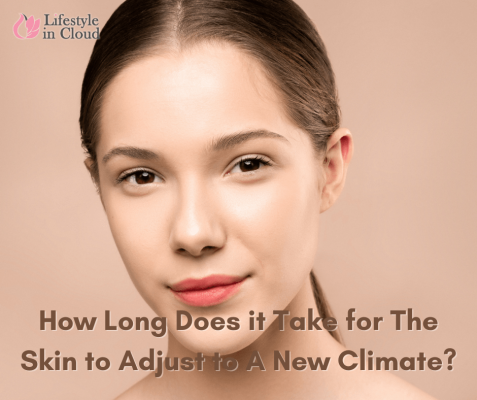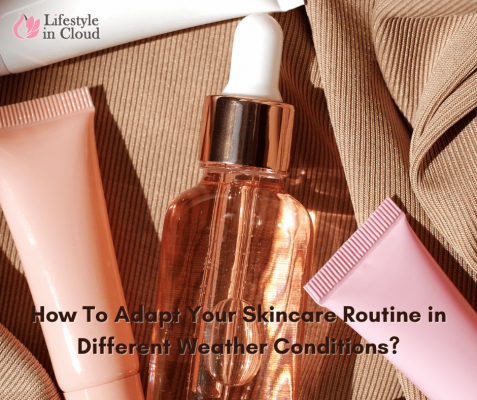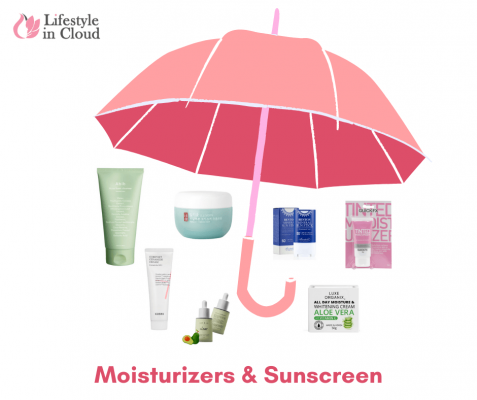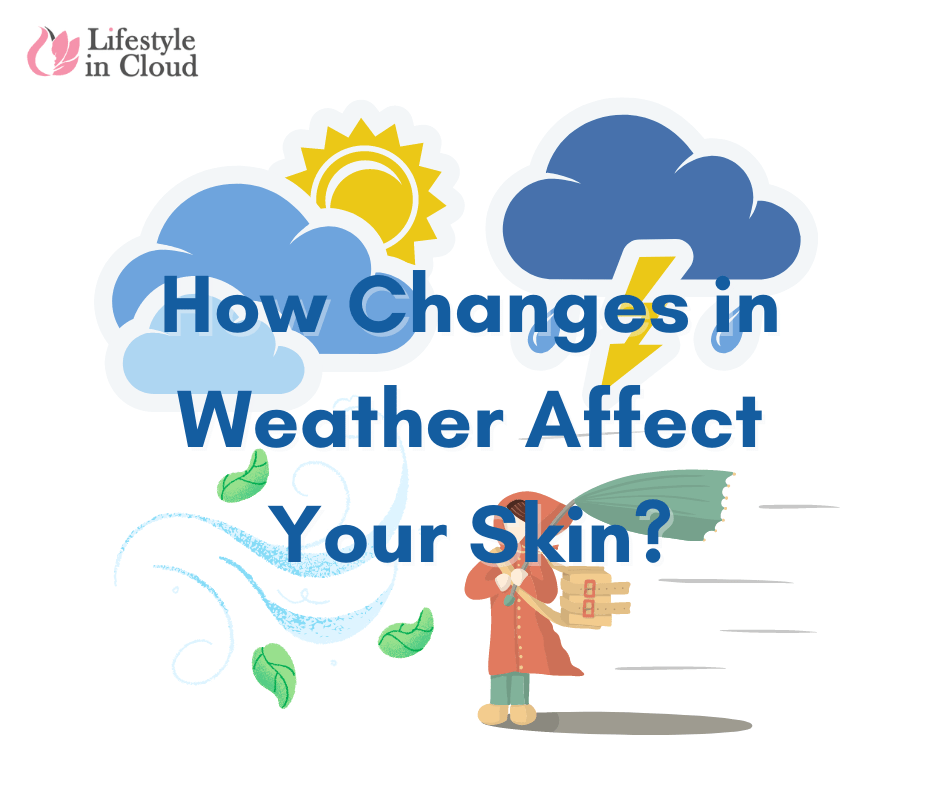Benton, Catt & Co, COSRX, Moisturizers
How Changes in Weather Affect Your Skin? Learn How To Adapt Your Skincare Routine
How Changes in Weather Affect Your Skin? Weather changes quickly affect your skin. A colder season can make your skin feel tight and dry. A warm climate can cause oil build-up and breakouts. Learn how to keep healthy skin in every season.
How Changes in Weather Affect Your Skin?
Changes in weather can have a variety of effects on your skin. Cold, dry air can cause dryness, flaking, and itching, while hot and humid air can cause sweating and clogged pores. Sun exposure can lead to sunburn, dark spots, and premature aging.
Wind can also dry out the skin and cause chapping. To protect your skin during different weather conditions, it’s important to keep it moisturized, use sunscreen, and limit your time in the sun. Additionally, staying hydrated and eating a healthy diet can also help to keep your skin healthy.
How Long Does it Take for The Skin to Adjust to A New Climate?

The time it takes for skin to adjust to a new climate can vary depending on a number of factors, including:
- Skin type
- The climate you are moving to
- And the measures you take to protect your skin
In general, it can take several weeks for the skin to adjust to a new climate, although it may take longer for some people. It’s important to take proper care of your skin during this transition period, such as by using sunscreen and moisturizer, to help minimize any negative effects.
What is Skin Acclimatization
Skin acclimatization refers to the process by which the skin adapts to shifts in its environment, such as changes in temperature, humidity, and sun exposure. Weather can hugely change the skin’s structure, as well as change the way it functions.
Some of the ways in which skin may acclimatize include:
- Increasing or decreasing oil production: This can help the skin maintain its moisture levels in response to changes in humidity.
- Changing the thickness of the epidermis: This can help the skin protect itself from sun damage or extreme temperatures.
- Increasing melanin production: This can help protect the skin from sun damage by providing a natural sunscreen.
Overall, skin acclimatization is a normal process that helps the skin maintain its health and function in different environments. The effects like dryness, irritation, and breakouts are quickly addressed with the right skincare routine.
How To Adapt Your Skincare Routine in Different Weather Conditions?

Adapting your skincare routine to different weather conditions can help protect your skin and keep it looking healthy. Here are a few tips for adapting your skincare routine to different weather conditions:
- In cold weather: Cold weather can dry out your skin, so it’s important to use a moisturizer to keep your skin hydrated. Look for a moisturizer that contains ingredients like glycerin, hyaluronic acid, or ceramides which help to trap the moisture in your skin.
- Hot and humid weather: Your skin may produce more oil in hot and humid conditions, which can lead to breakouts. To help combat this, use a gentle cleanser and toner to keep your skin clean and refreshed.
- Dry weather: A soft cleanser and a heavy moisturizer to keep your skin hydrated in dry weather can help combat skin dryness.
- In sunny weather: Sun exposure can cause damage to your skin, such as sunburn, wrinkles, and age spots. It’s important to use sunscreen with SPF 30 or higher to protect your skin from the sun’s harmful rays.
- Windy weather: To protect your skin in windy weather, use a moisturizer with a heavier consistency and consider applying a lip balm to protect your lips.
It’s also important to note that it’s not just the external weather that can affect your skin, internal factors such as stress, diet, and medication can also play a role. It’s also good to pay attention to any changes in your skin and adjust your skincare routine accordingly.
What Kind of Skin Moisturizer is Good for Different Weather?

Moisturizers are not a one-size-fits-all type. Each skin type needs a different moisturizer and so do the various weather conditions. Various types of moisturizers are better suited for different weather conditions. Here are a few examples:
Cold Weather
Thick, creamy moisturizers are good for cold weather as they provide a barrier to protect the skin from the dry, cold air. Look for moisturizers that contain ingredients like shea butter, cocoa butter, or petrolatum, as they are known for their ability to lock in moisture.
Hot and Humid
In hot and humid weather, lighter, water-based moisturizers are best as they are less likely to clog pores and cause breakouts. Look for moisturizers that contain hyaluronic acid, glycerin, or aloe vera, which can help hydrate the skin without feeling heavy.
Dry weather
In dry weather, it’s important to use a moisturizer that can help to trap moisture in the skin. Consider using an oil-based moisturizer, such as coconut oil, argan oil, or avocado oil, as they can help to seal in moisture.
Sunny weather
In sunny weather, it’s important to use a moisturizer that contains sunscreen to protect the skin from UV rays. Look for a moisturizer that contains SPF 30 or higher and also contains ingredients like hyaluronic acid or glycerin to keep your skin hydrated.
It’s also important to note that different skin types may have different needs, so it’s always a good idea to consult a dermatologist or skincare professional to know what’s best for you.
Do I Need Sunscreen in Cold Weather?
Yes, you should use sunscreen in cold weather. Even though the sun might not feel as intense during the colder months, the sun’s ultraviolet (UV) rays can still penetrate through the clouds and cause damage to your skin.
UV rays are detrimental to the skin. Snow can also reflect the sun’s rays, increasing your risk of sun damage. Therefore, it’s important to use sunscreen with a minimum of SPF 30 all year round, even on cloudy or cold days.
It’s also a good idea to try and limit your sun exposure during the times of day when the sun’s rays are the strongest, typically between 10 am and 4 pm. And if you’re going to be outside for extended periods of time, be sure to reapply sunscreen every two hours or after swimming or sweating.
In addition to sunscreen, consider wearing protective clothing such as scarves, hats, and gloves to protect your skin from the sun and the cold.
Summary
Regardless of the weather, it is vital to keep your skin healthy at all times. Moreso, if you are traveling wherein your skin will experience rapid climate changes.
Weather changes greatly affect your skin, you need to adapt to each condition by maintaining healthy skin with the help of the right skincare products.


